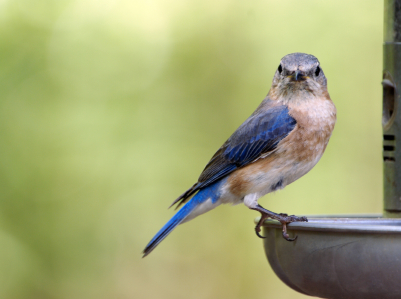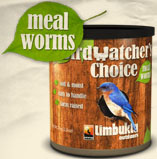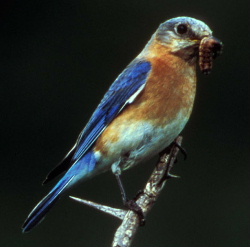-
Bluebird House Wars
So You’d Like to Attract Bluebirds?
One of the favorite of all songbirds is the bluebird. Their gentle disposition, and sense of family are amazing, not to mention their color and song. Placing a bluebird house in your yard is a great way to start, but may not do the trick in and of itself.
Fierce competition for nest boxes exists between house sparrows (a non-native species) and our beloved bluebirds. House sparrows are known to kill babies and adult bluebirds alike. One way to help alleviate the fighting, is to place an additional bluebird house about 10-15 feet away from the first one.
Adding a bird bath will not only help attract bluebirds, but other wonderful songbirds as well. The all-time favorite treat for bluebirds has got to be live mealworms! They are coveted for the high protein content, and most birds will gorge on them…literally eating you out of house and home! The way to exclude these little piggies is to feed meal worms in a bluebird feeder. There are very few birds, besides the bluebird, who will use this type of feeder – having to fly through a hole to reach the prize inside.
Bluebird babies are absolutely irresistible, and if you’re lucky enough to witness two broods in the same season, you’ll see the young from the first brood help mom and dad feed the new babies. Whether you choose a wooden bluebird house, or a recycled plastic one, pay close attention to placement – approximately 5-6 feet high, and in an open area. If you pole-mount the house, it’s best to use a baffle below it to thwart predators. A portal protector over the entrance will also help to ensure a successful brood.
Happy Birding!
-
Not Live nor Dried Mealworms!
A great alternative to live mealworms, these worms are packaged to lock in natural juices, keeping them soft and moist for ultimate bluebird attraction. Tastier than dried mealworms, without the hassle or wiggle of live ones.
Mealworms were the only food that enticed our bluebirds to feeders. In fact, after a few weeks of constant feeding, they decided to call it home and build their nest. Not one, but two successful broods were raised that spring.



